
I love reading simple writing. It’s clear. It’s easy to understand. And it doesn’t force me to work hard.
But simple writing is easier said than done. Even though it’s easy on the readers, it’s hard for the writer. In this article, I’ll go over what I mean by “simple” in writing, and then give you eight tips on how to simplify your writing.
What do I mean by ‘simple’?
Simple doesn’t mean dumb.
You don’t need to talk to down to your readers. That’s not simple — that’s condescending (and possibly offensive). You can write smart content using simple words.
Simple means easy to understand.
If the reader has to work so hard to understand what you’re trying to say, it’ll distract them from your message. You’ll lose out in the end.
Simple writing can communicate complex ideas.
I love this quote by Albert Einstein: “If you can’t explain it simply, then you don’t understand it well enough.” That comes from the guy who summed up the equation below with e = mc².
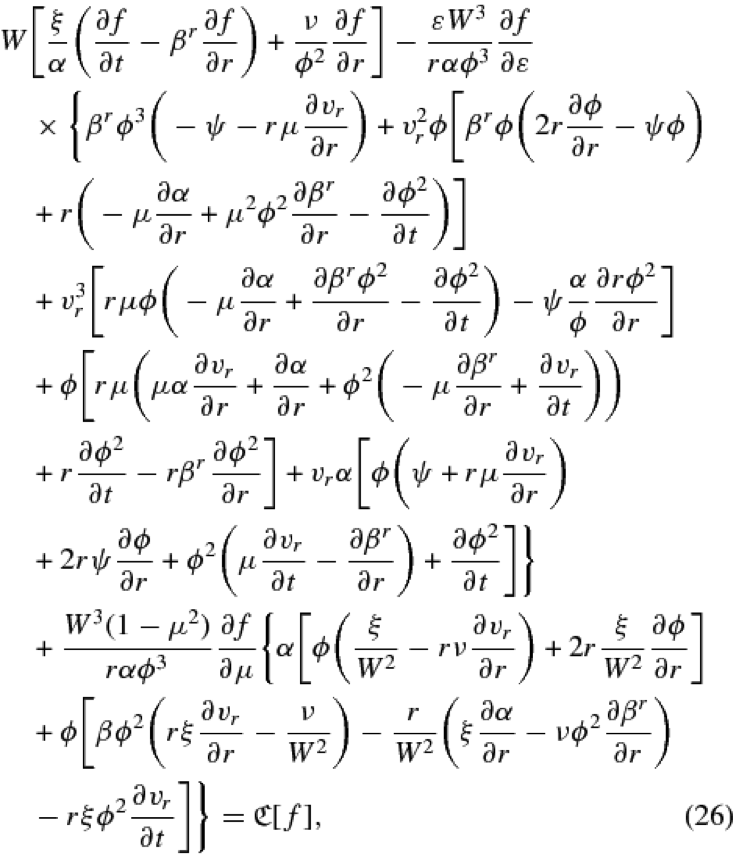
That’s why Einstein was a genius: He understood some really complicated stuff and also knew how to convey that complicated stuff in simpler terms. Think about the complex, specialized topics you know a lot about. It’s key that you’re able to explain those topics clearly and concisely to others.
‘Simple’ is relative to the audience.
I write in different ways for different audiences. Every audience has their own idea of “simple.” Something that’s simple for a medical doctor to read is not going to be simple for a lawyer, and vice versa.
Let me give you an example. Below is an excerpt from an article on Quicksprout. Now, my Quicksprout readers are smart and savvy — they love SEO, detailed guides, and advanced techniques. So I wrote an article about infinite scrolling and SEO — which is pretty technical, specialized stuff. But I tried to use as simple language as possible in the article. I’ve highlighted some of these examples in yellow:
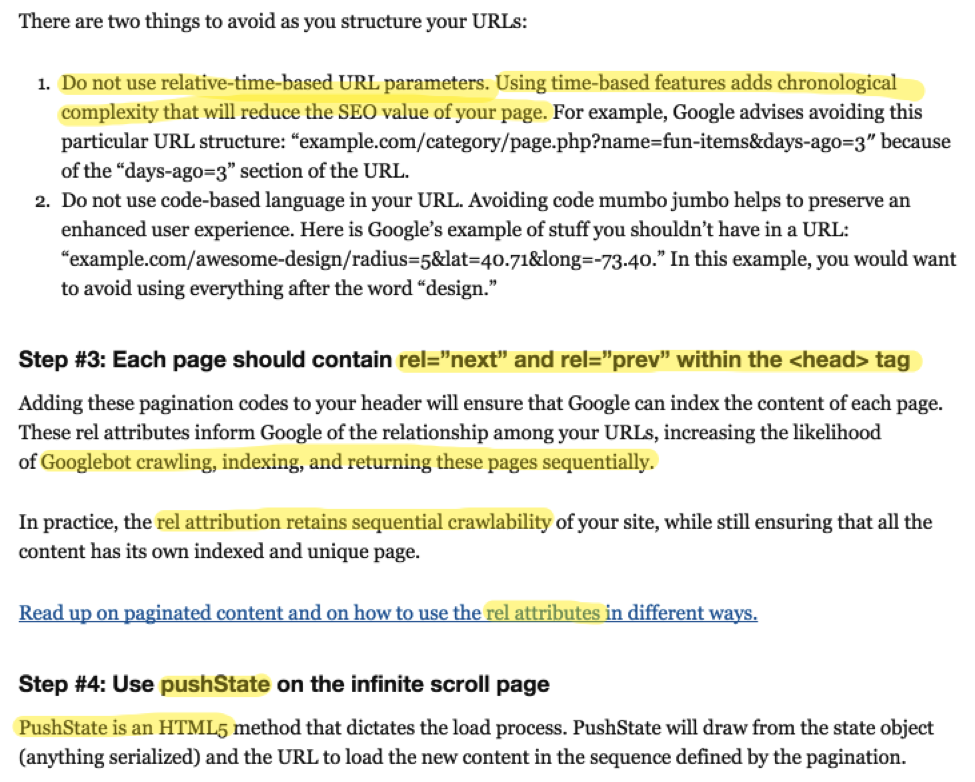
Here’s another screenshot of the same section in the article, where I’ve highlighted some of the easy expressions I used to simplify the language where possible.
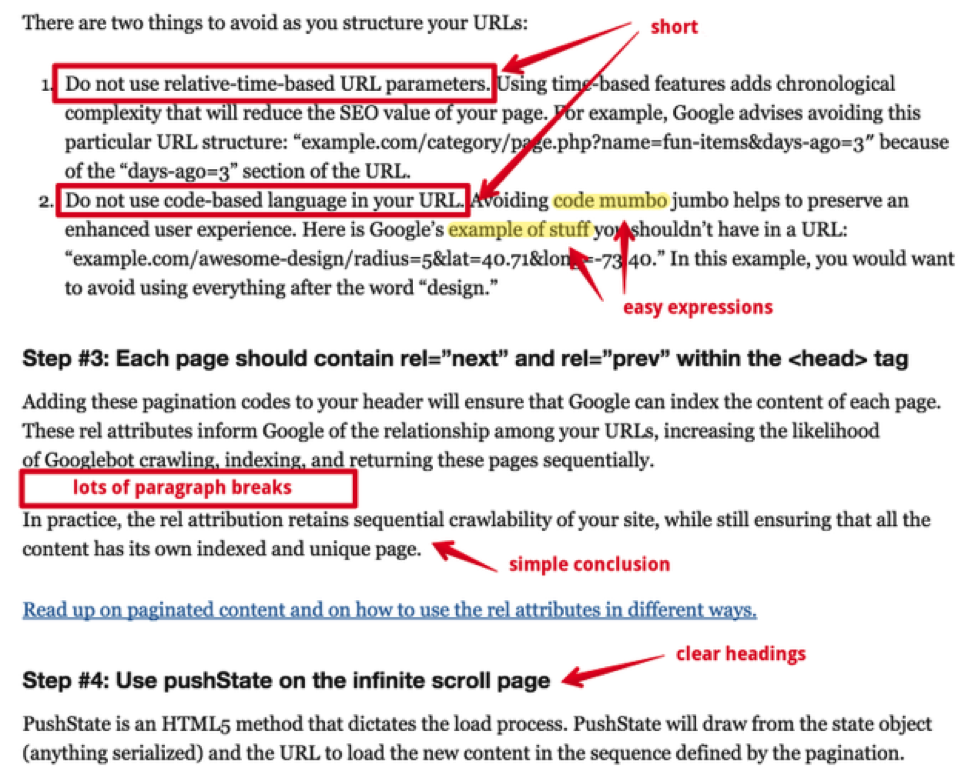
Now that we’ve talked a little about what simplicity in writing is, let’s dive into tips for how to make your writing more simple.
8 Tips to Simplify Your Writing
1) Write like you speak.
Ramit Sethi is the author of the New York Times bestseller I Will Teach You To Be Rich. In addition to writing that book, he writes a lot of stuff — and his stuff is good. The coolest thing about his writing style is that it sounds like he’s chatting with me over drinks at the bar. He doesn’t mind tossing a four-letter word or two in the mix every once in a while, because that’s just who he is. It’s him being real, and it’s him talking to you. He just happened to write it down.
Here’s an example from his blog, also called “I Will Teach You To Be Rich”:
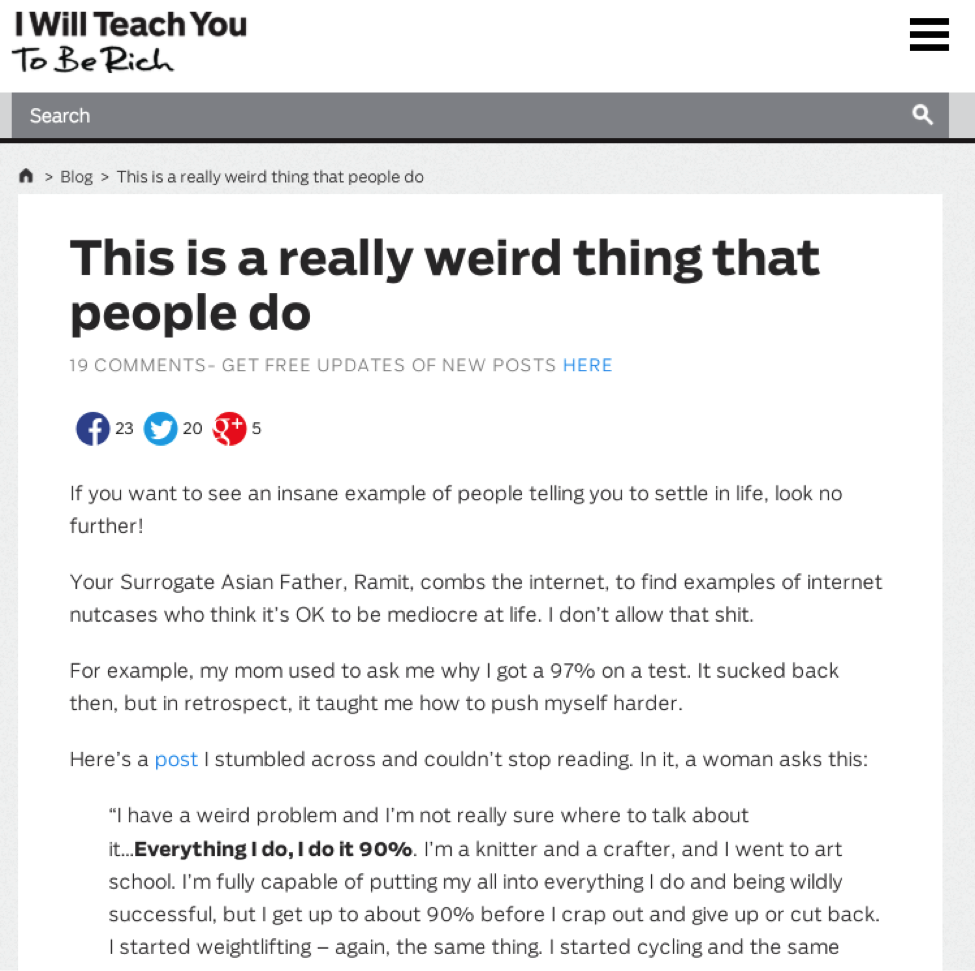
Casual language, colloquial expressions, personal anecdotes — they make your writing sound more human. And humans relate to one another.
The takeaway here: People like when you write like you speak.
2) Tell your readers when you’re switching gears.
Writing is like leading someone down a path. If you suddenly jump off the path into the woods, they might get lost. They might keep walking down the path, wondering where in the world you went. A transition is where you tell the person whom you’re leading, “Okay, I’m stepping off the path here. Come with me.” That warning is crucial.
It’s important to make transitions as clear as possible for your readers so they can follow along whether they’re skimming or reading every word. Usually, a header will do. Other times, you’ll need to actually explain with words that you’re doing it. Or both.
3) Use examples and illustrations.
One of the best ways to clear up a point is to show an example or an illustration. A great example of this is this article by Giles Thomas on the ConversionXL Blog. In the brief excerpt below, note his use of images to illustrate his point.
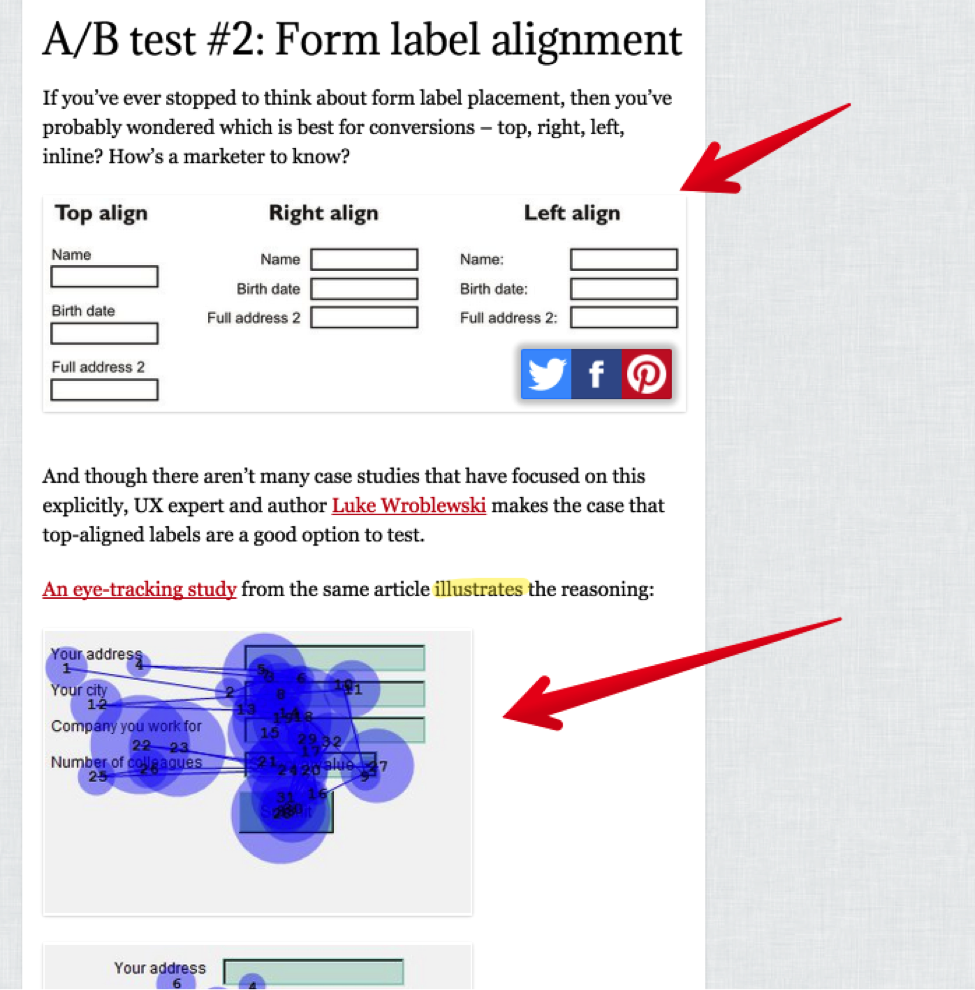
Remember: Showing someone is often better than telling someone. Plus, people like pictures.
4) Make paragraphs short.
If you scan over this article, you’ll see that no paragraph is more than a few lines long. I recommend a maximum of six lines for paragraphs.
Why do I use such short paragraphs? Because it gives your brain time to think about what I just said. Paragraph breaks are like periods, only better. They tell you where one idea ends and another idea begins. Between those ideas, your brain gets a little chance to think about it, process it, and take a mental breath for the next thought.
Your eyes can move faster across a line of text faster than your brain can process it. Paragraph breaks are a technique that helps to break up the eye movement and help your brain with little pauses.
5) Have someone else read it.
If you struggle with keeping it simple, get help. Friends don’t let friends write complicated stuff.
Ask (or demand) that someone ruthlessly edit your writing for simplicity. Consider asking someone who doesn’t know much about the topic you wrote about — if he or she understands your explanation, then you’ll know your writing clear.
6) Ask questions, and provide answers.
The Socratic Method is the process of asking questions and then providing answers to reach a conclusion. I do this all the time in my writing because it helps me to organize my own thoughts, and thereby helps my readers.
Here’s an excerpt from an article I wrote on split testing. In this article (which is pretty long), I ask more than 70 questions. It’s a great technique for writing clearly and simply.
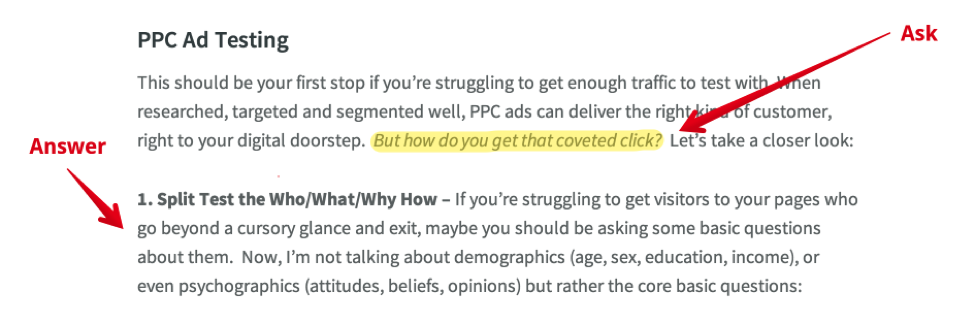
8) Remove unnecessary words.
If you don’t need to say it, take it out.
Check the sentence I highlighted from an article on ShopifyNation.com:

That highlighted sentence is clear and succinct. But the author could easily have written something like this:
“Often, in many ecommerce sites, it’s apparent that the main difference between a good or favorable photo and a bad or unprofessional photo can create disruption in the sales process, creating cognitive and visual dissonance in the mind of the potential buyer, and reducing their eagerness to purchase the featured product — to make or break the sale.”
What the heck does that mean?
When you boil down to the crux of that long, convoluted sentence, you come up with: “The difference between good or bad photos can make or break the sale.” It’s the same concept using fewer words, less clutter, and less confusion.
8) Use short sentences.
Short sentences are atomic power in simplicity. The maximum words you should use in a sentence is 25. Short sentences are always better than long sentences. (Although sentence length variability can be a good thing, to a certain point.)
What it comes down to is this: If you can write simpler, you will write better.
I know that I’m not the world’s best creator of simple content, but I’m trying.
What are your tips for simpler writing?
![]()






